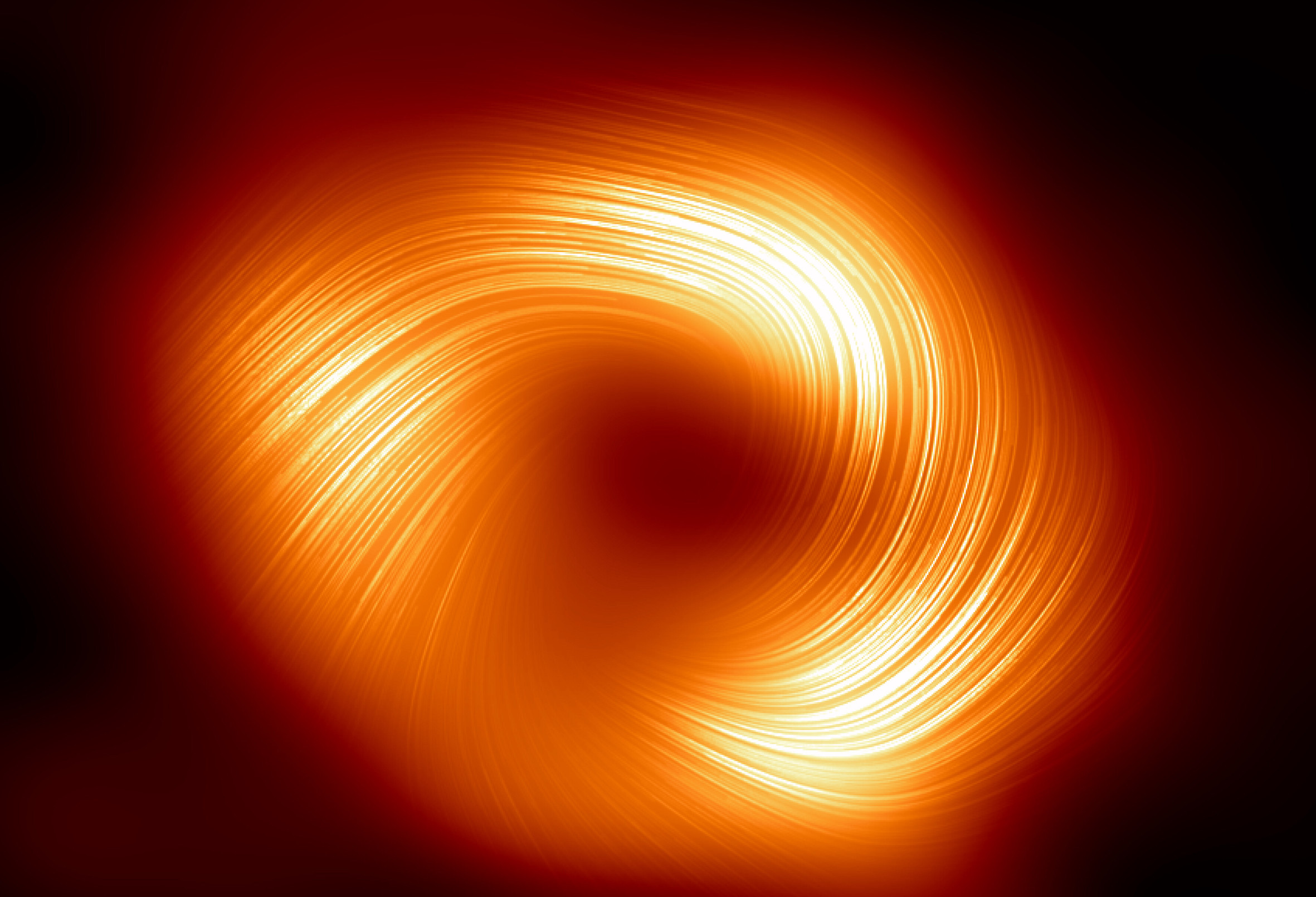
The Event Horizon Telescope (EHT) scientific collaboration has produced the first polarized light image of the supermassive black hole Sagittarius A* (Sgr A*). The new image uncovered strong and organized magnetic fields spiraling from the edge of the supermassive black hole Sagittarius A* (Sgr A*), at the heart of the Milky Way Galaxy. Furthermore, it has revealed that the magnetic field structure is strikingly similar to that of the black hole at the center of the M87 galaxy, suggesting that strong magnetic fields may be common to all black holes. This similarity also hints toward a hidden jet in Sgr A*. The results were published today in The Astrophysical Journal Letters.
“The fact that the magnetic field structure of M87* is so similar to that of Sgr A* is significant because it suggests that the physical processes that govern how a black hole feeds and launches a jet might be universal among supermassive black holes, despite differences in mass, size, and surrounding environment,” explains Mariafelicia De Laurentis, professor at the University of Naples Federico II and researcher at the Italian National Institute for Nuclear Physics. “This result allows us to refine our theoretical models and simulations, improving our understanding of how matter is influenced near the event horizon of a black hole.”
Polarized light is an electromagnetic wave oscillating in a preferred orientation. In the plasma around these black holes, particles whirling around magnetic field lines impart a polarization pattern perpendicular to the field. This allows astronomers to see in increasingly vivid detail what’s happening in black hole regions and map their magnetic field lines. By imaging polarized light from hot glowing gas near black holes, we are directly inferring the structure and strength of the magnetic fields that thread the flow of gas and matter that the black hole feeds on and ejects. Polarized light teaches us a lot more about the astrophysics, the properties of the gas, and mechanisms that take place as a black hole feeds. But imaging black holes in polarized light isn’t as easy as putting on a pair of polarized sunglasses, and this is particularly true of Sgr A*, which is changing so fast that it doesn’t sit still for pictures.
Having images of both supermassive black holes in polarized light is a great result because these images, and the data that come with them, provide new ways to compare and contrast black holes of different sizes and masses. As technology improves, the images are likely to reveal even more secrets of black holes and their similarities or differences.
“While waiting to clarify where a property of the polarized signal (called rotation measurement) that we recorded at 230 GHz originated, i.e. whether in the gas clouds that are between us and Sgr A* or much closer, in the plasma that surrounds it, these new results provide strong constraints on the growth models of Sgr A*. In the future, by combining polarimetric data at 230 and 345 GHz, we will be able to learn more about these aspects of the nature of the black hole at the center of our galaxy.” says Kazi Rygl, researcher at the Italian National Institute for Astrophysics.
The EHT scientific collaboration has conducted several observations since 2017 and is scheduled to observe Sgr A* again in April 2024. Each year, the images improve as the EHT incorporates new telescopes, larger bandwidth, and new observing frequencies. Planned expansions for the next decade will enable high-fidelity movies of Sgr A*, may reveal a hidden jet, and could allow astronomers to observe similar polarization features in other black holes. Meanwhile, extending the EHT into space will provide sharper images of black holes than ever before.





